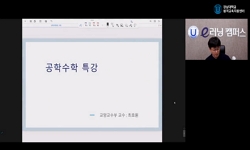Philip Roth employs the most complex narrative techniques in his two novels, The Counterlife and Operation Shylock. In the novels he continually alters his angles of vision. In The Counterlife, he introduces a fresh beginning or an alternative in one ...
http://chineseinput.net/에서 pinyin(병음)방식으로 중국어를 변환할 수 있습니다.
변환된 중국어를 복사하여 사용하시면 됩니다.
- 中文 을 입력하시려면 zhongwen을 입력하시고 space를누르시면됩니다.
- 北京 을 입력하시려면 beijing을 입력하시고 space를 누르시면 됩니다.
https://www.riss.kr/link?id=A75163429
- 저자
- 발행기관
- 학술지명
- 권호사항
-
발행연도
2004
-
작성언어
Korean
- 주제어
-
등재정보
KCI등재
-
자료형태
학술저널
-
수록면
109-131(23쪽)
-
비고
학회 요청에 의해 무료로 제공
- 제공처
-
0
상세조회 -
0
다운로드
부가정보
다국어 초록 (Multilingual Abstract)
Philip Roth employs the most complex narrative techniques in his two novels, The Counterlife and Operation Shylock. In the novels he continually alters his angles of vision. In The Counterlife, he introduces a fresh beginning or an alternative in one chapter after another, thus placing a new story, a new version of reality, against what precedes it: a character who was dead and buried suddenly becomes alive; a character who was assumed to be alive turns out to be dead, and so on. In Operation Shylock, there is the shifting reality of Philip Roth, the fictional author, Moishe Pipik, the shadow self or the other, and the real author Roth. Although Roth's self referential strategy he uses is hardly new in postmodern fictions, nor is the use of the double a new device, the combination of the two yields a particularly rich meditation on the discursive construction of subjectivity. And instead of providing a neat conclusion with all the questions answered Roth leaves the end of the books hanging in the balance and open to question. This is not an ordinary Aristotelian narrative that readers are familiar with. In The Counterlife, Roth stimulates the reader's imagination by celebrating the multiple possibilities in life, not a singular certainty. Despite the agony of self-doubt and self-loathing, Roth's protagonists have a powerful desire for self-rejuvenation and transformation; they project their counterlives as best as they can. In Operation Shylock, Philip, a protagonist of the novel, guided by his "Jewish conscience," performs an operation of resistance against Shylock through multiple self-impersonations. If Shylock is the figure for the Jew in Western discourse, Operation Shylock may be in some sense translated as "Operation Represent-the -Jew." The novel literally bears this fact out, in that Smilesburger has asked Philip to represent Jews on a secret mission to find out Jewish backers of the Palestinians. It is required that Philip represent the very Jewish subjectivity in language for himself and his readership. In conclusion, Roth maintains that life doesn't necessarily have only a set course, a simple sequence, or a predictable pattern. To reflect the nature of reality in human life, he takes up complex and speculative situations and offers different paths of life that may be open to the individual. Roth concerns himself with how to defines Jewish identity and the identity of his own self. So he tries to deal with the problem in his novels both ways ― at once exposing and suppressing, representing and claiming the impossibility of representation. Roth reassert postmodern skepticism about identity of the self, about the metafictional aspects of history, and about the many faceted views of factual evidence.
동일학술지(권/호) 다른 논문
-
뉴 리얼리즘의 문학적 맥락: 멜빌 소설의 시적/상징적 문제
- 21세기영어영문학회
- 고창석
- 2004
- KCI등재
-
Kenneth Branagh's Cinematic Translation of Shakespeare's Henry V
- 21세기영어영문학회
- Kim, Kang
- 2004
- KCI등재
-
- 21세기영어영문학회
- 김일환
- 2004
- KCI등재
-
젠더와 식민성 극복의 문제-자메이카 킨케이드의 『애니 잔』을 중심으로-
- 21세기영어영문학회
- 이현주
- 2004
- KCI등재





 eArticle
eArticle KISS
KISS






